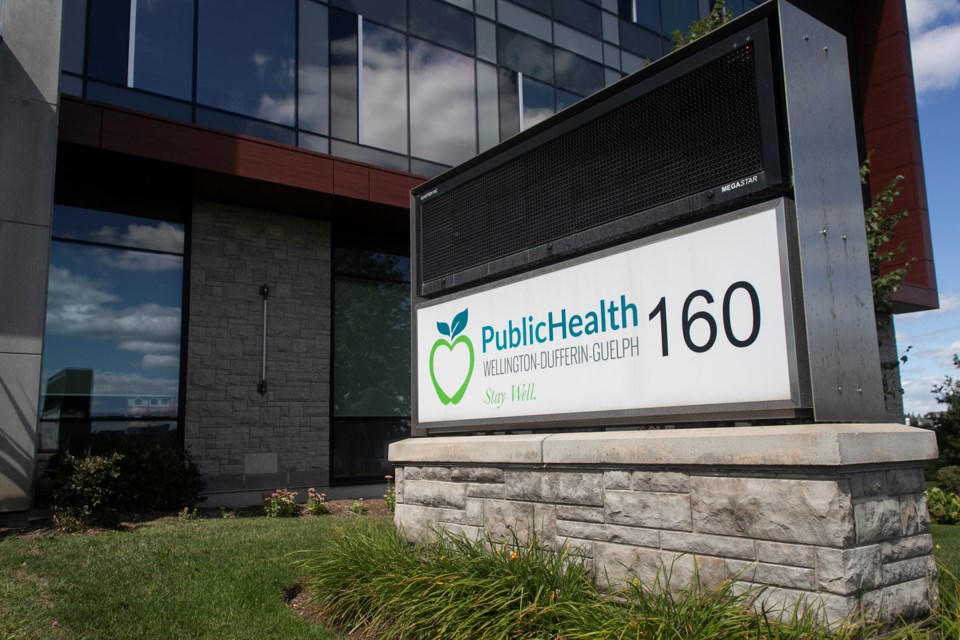As need increases for provincially-funded dental programs, low-income seniors and youth are struggling with long wait times, disqualification and a lack of service providers.
The Ontario Seniors Dental Care Program has provided preventative and restorative services to low-income seniors in Guelph through WDGPH since 2021, with 13 service providers in the region, four private denturists and one oral surgeon supporting the program. The oral surgeon only accepts one client every six months.
Low income seniors are eligible for the program if they are 65 and older, live in Ontario, don’t have access to private or public health benefits, including ODSP or Ontario Works. Single residents 65 and up must have an income of $22,000 or less, or senior couples with a combined income of $37,100 are eligible.
But according to a recent WDGPH report, between 25 to 30 per cent of clients have been disqualified for the 2023/2024 program year, largely due to government rebates like the Grocery Rebate, the Climate Action Incentive or the Canada Pension Plan Death Benefit being considered as taxable income.
According to the report, some of the clients have even been disqualified while in the middle of an extensive treatment plan. However, public health is still honouring the plan for those individuals.
They are also experiencing long wait times, with the current waitlist in Guelph sitting at about 195 clients, with new clients added to the list daily.
But those aren’t the only issues complicating access for seniors: the program struggles to attract and retain enough dentists and specialists to take on clients.
Why? It’s just not profitable. In fact, it often ends up costing them more money than they’re reimbursed.
A public health survey found dentists and specialists are reluctant to support the program because the reimbursement amount is “insufficient” and can’t “even cover their staffing, supplies, and other overhead costs.”
In particular, the OSDCP service schedule based on the Ministry of Children, Community and Social Services rates are only a fraction of the Ontario Dental Association fee guide, “and generally not acceptable to providers.”
As a result, the report states, dentists are paying out of pocket to support these clients. If funding doesn’t increase to cover mandatory costs and a small stipend, public health is concerned dental providers will no longer be able to support the two programs.
“The provider is not being asked to just work for free, they are being asked to subsidize the cost of the dental treatment. This situation is not just unsustainable but ethically questionable. Access to appropriate dental providers is essential for the program and the clients,” the report states.
The report states the low provincial fee schedule combined with the high complexity of care needs are main factors limiting access for clients, resulting in a waitlist for specialist services and leaving some with prolonged periods of time with “unmet dental needs that continue to progress.”
Currently, clients in the region have no access to specialty services like endodontists or prosthodontists, and have “extremely limited” access to oral surgeons.
Still, the program has seen a huge boost in clients seen or referred in the last year.
The number of unique clients grew from 389 in 2022 to 597 in 2023. Meanwhile, there were 970 clinical appointments in 2022, a number that grew by around 58 per cent to 1,534 in 2023.
In 2022, there were 466 hygiene appointments and 839 in 2023; The program completed 714 restorative fillings in 2022 and 1,496 the following year. The number of root canals performed also increased from eight to 36.
These same issues are also impacting the Healthy Smiles Ontario program, which provides oral health dental school screenings as well as preventative, essential and emergency dental services to youth under the age of 17 from low to moderate income families.
During the 2022/2023 school year, 14,545 children in junior and senior kindergarten and Grades 2, 4 and 7 were screened through the Oral Health School Screening Program. Of those screened, 476 had urgent needs, 816 had non-urgent needs, and 28 per cent had decay or missing teeth.
Meanwhile, HSO clinics saw an increase in the number of screenings, from 439 in 2022 to 624 in 2023.
However, there were only 237 new patient cleanings in 2023 from 229 in 2022; 1,766 clients were seen in 2023 compared to 1,454 in 2022. Only five HSO-core applications were completed last year, compared to 20 the year prior.
To address this growing need, public health has adjusted the internal fee schedule to try to attract and retain more service providers.
The Board of Health is advocating for the Ministry of Health to acknowledge that the fee code payments should include coverage of dental provider overhead costs, and that the provider will receive compensation.
In addition, members would like to see the ministry exclude government rebates from income assessment calculations for seniors to ensure those who qualify for the program don’t have their care interrupted, and for fluoride varnish to be introduced in all publicly funded schools to help prevent dental issues in children.



